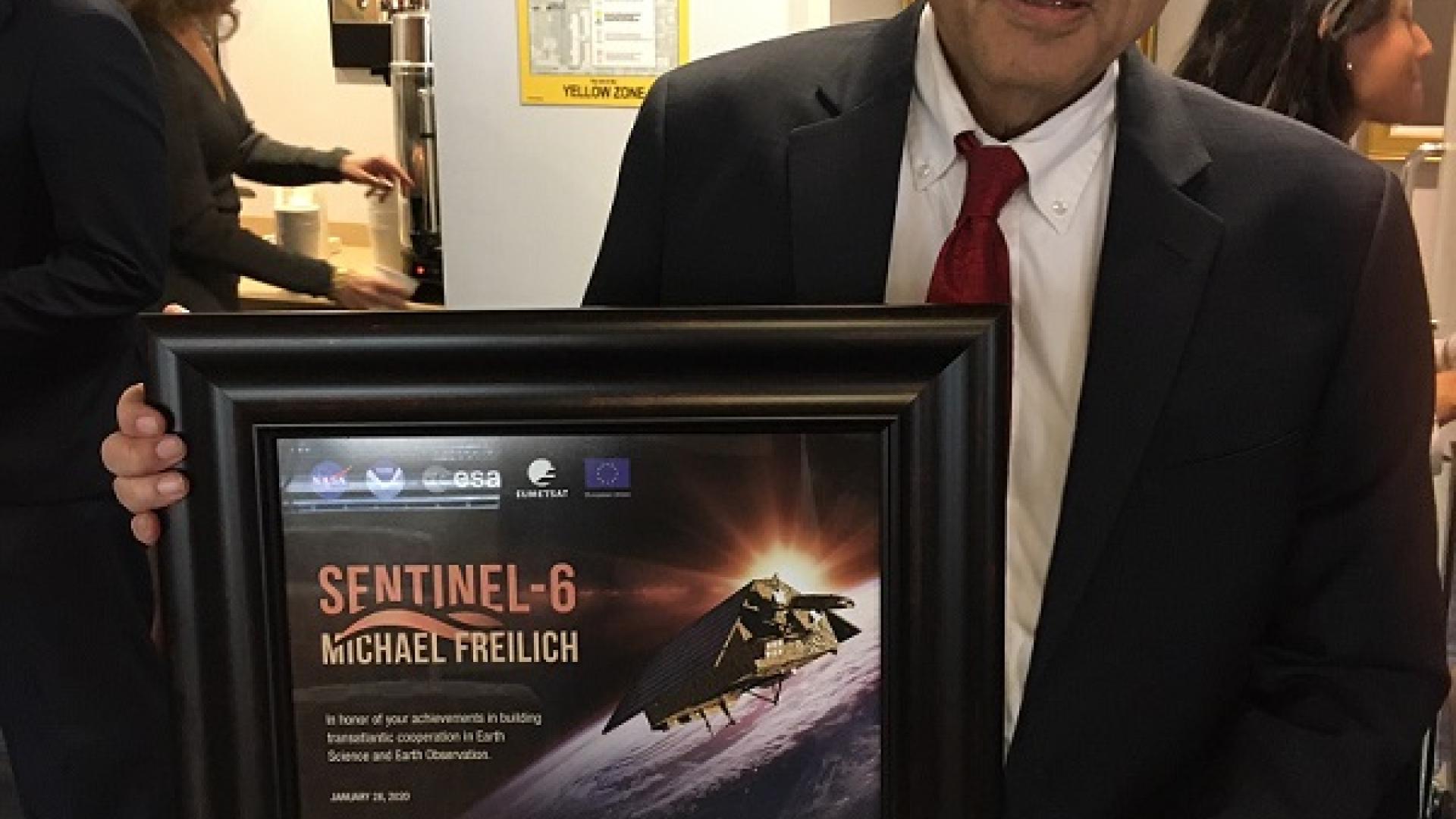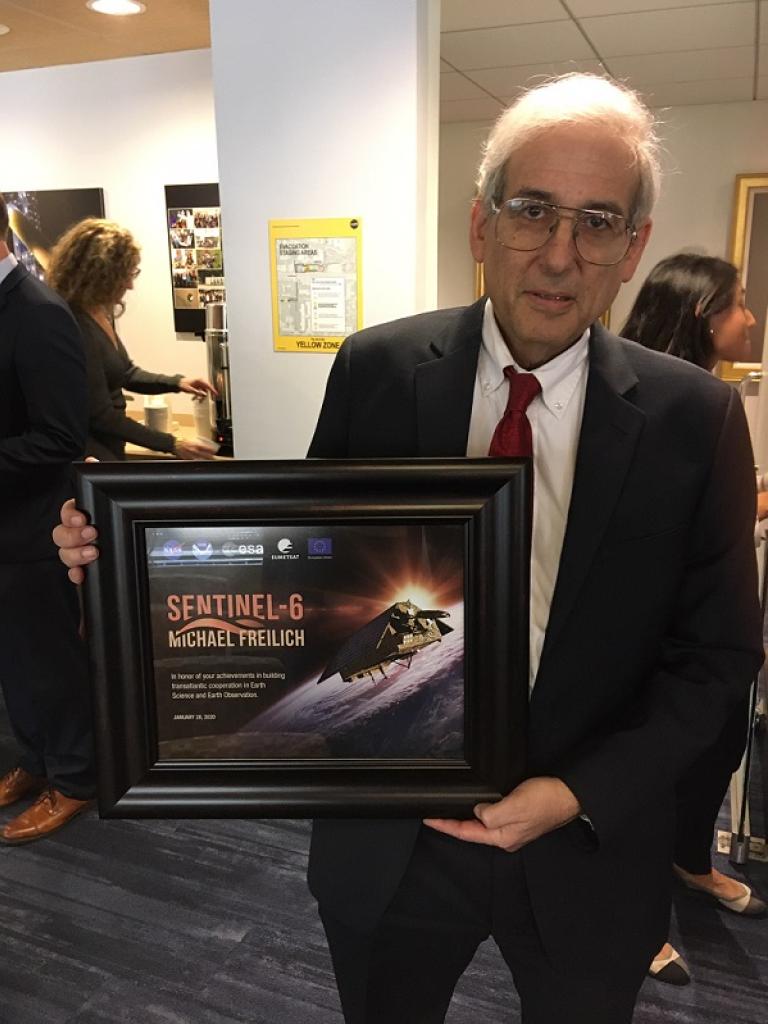
The story behind the decision to rename a satellite


Naming a satellite after a person – other than historical or mythical figures – is a very rare occurrence.
26 August 2020
03 February 2020
However, in January 2020, the European and American partners in a joint ocean-monitoring satellite mission gathered in Washington to rename the admittedly unpoetic-sounding Sentinel-6A satellite after the retired Director of NASA’s Earth Science Programme, Dr Mike Freilich.
Why?
According to EUMETSAT Director-General Alain Ratier, and leaders from NASA, the US National Oceanic and Atmospheric Administration, the European Space Agency and the European Commission, Freilich was a unique personality whose passion for Earth science enabled significant progress in Earth observation programmes.
NASA has released a tribute video revealing the great regard for Freilich on both sides of the Atlantic that led to the decision to name a satellite in his honour.
Video of the full renaming ceremony can be seen here .
The Copernicus Sentinel-6 mission is, in itself, a rarity. Its primary aim is to continue highly accurate measurements of the mean sea level in our changing climate. It relies on exemplary international cooperation to achieve this aim.
This high-precision ocean altimetry data time series began in 1992 with the launch of the TOPEX/Poseidon mission (1992-2006), a joint NASA/French Space Agency (CNES) mission.
It was continued by Jason-1 (2001-2013), Jason-2 (2008-2019), when EUMETSAT and NOAA became partners, and Jason-3 (launched in 2016), which also involved the EC and ESA.
The Copernicus Sentinel-6 mission will ensure this time series continues until at least 2030 through two successive satellites, the Sentinel-6 Michael Freilich and Jason-Continuity of Service B.
